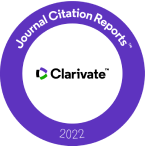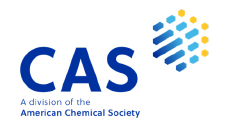Journal Volumes
Visitors
ALL : 901,984
TODAY : 2,200
ONLINE : 81
ALL : 901,984
TODAY : 2,200
ONLINE : 81
JOURNAL DETAIL
Bioactivity, Cytotoxicity and Antibacterial Evaluation of Undoped, Zn-doped, Sr-doped, and Zn/Sr-codoped Hydroxyapatites Synthesized by a Sol-gel Method
Paper Type |
Contributed Paper |
Title |
Bioactivity, Cytotoxicity and Antibacterial Evaluation of Undoped, Zn-doped, Sr-doped, and Zn/Sr-codoped Hydroxyapatites Synthesized by a Sol-gel Method |
Author |
Likit Temprom [a], Suphasinee L. Seet [a,b,c], Patcharaporn Tippayawat [d], Pimsiree Suwanna* [a,b, |
Email |
pimsiree.s@ku.ac.th |
|
Abstract: Undoped, Zn-doped, Sr-doped and Zn/Sr-codoped hydroxyapatite nanoparticles were synthesized using a sol-gel method. Their phases, morphologies and particle sizes were analyzed by XRD, FTIR and TEM techniques. MTT assay was performed to test cell viability against these nanoparticles. Forming ability of bonelike apatite and antibacterial activities were evaluated by immersing them in simulated body fluid (SBF) and by using agar disc diffusion assay against gram-positive Staphylococcus epidermidis and gram-negative Pseudomonas aeruginosa, respectively. The XRD and FTIR results showed the characteristic peaks of the hydroxyapatite structure; whereas the TEM results revealed nanoparticles with the size of 40-300 nm. The MTT assay indicated these nanoparticles are nontoxic. In SBF, significantly higher amount of apatite was formed on the doped-HA than on the regular HA. Incorporation of Zn ion into HA was observed to stimulate agglomeration of the newly formed apatite, whereas incorporation of Sr ion seemed to spread out the small apatite granules. Antibacterial tests demonstrated that HA alone could only inhibit the viability of P. aeruginosa but not S. epidermidis. However, its antibacterial capability against both strains was enhanced by Sr and/or Zn doping, with Sr being more effective. These doped-HA nanoparticles, therefore, could be promising candidates for future biomedical applications with good antibacterial property and apatite forming ability. |
|
Start & End Page |
630 - 639 |
Received Date |
2015-04-03 |
Revised Date |
|
Accepted Date |
2015-10-13 |
Full Text |
Download |
Keyword |
hydroxyapatite, bioactivity, biocompatibility, antibacterial |
Volume |
Vol.44 No.2 (April 2017) |
DOI |
|
SDGs |
|
| View:566 Download:129 | |
Copyrights © Since 2021 All Rights Reserved by Chiang Mai Journal of Science






